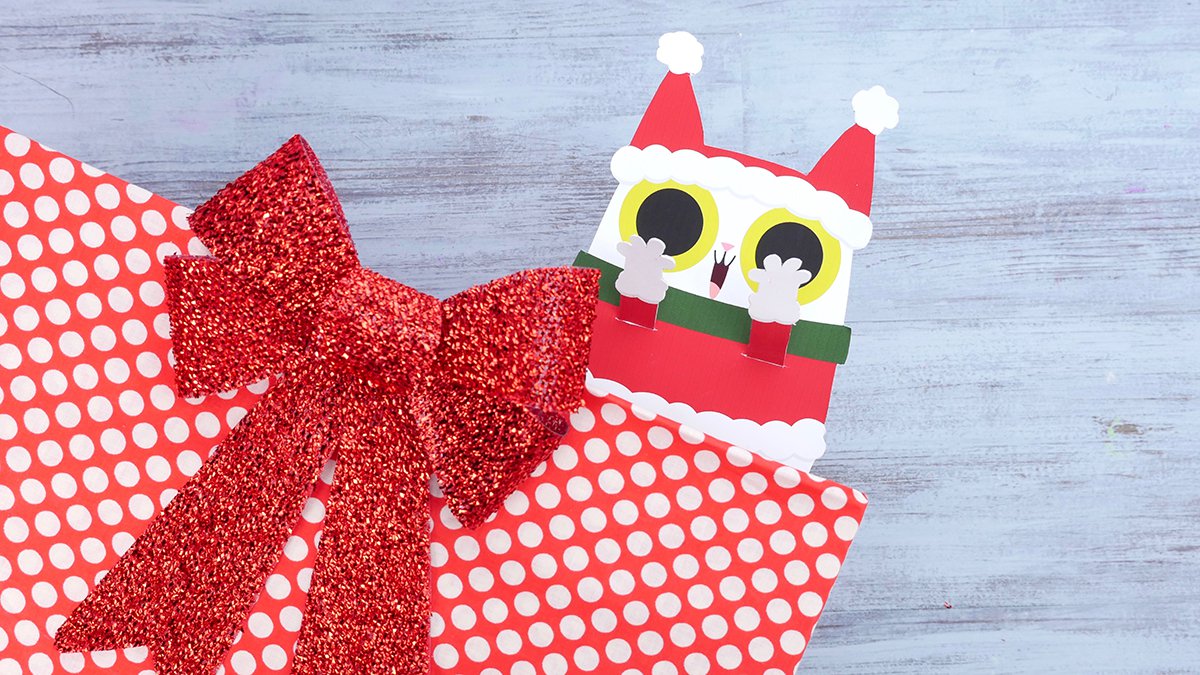
Christmas is such a magical time for children (and many adults- like me!) and as such it can be so beneficial to use these special moments to help kids learn to talk. As a Speech Language Pathologist (SLP), I love using songs to support the language concepts I teach in speech therapy. You can find out more why SLPs love Super Simple songs here, but what I’d really like is to teach parents how they can use songs at home to support speech and language development this holiday season!
Super Simple has TONS of songs to help kids make connections during the holidays, and a great resource for getting kids ready for Christmas. Some of my personal favorites are Up On the Housetop, 10 Little Elves, Decorate the Christmas Tree, and Santa, Where Are You? This year Super Simple released two new songs that are both great for speech and language development, and are the songs I will use to teach you how to help build your child’s speech and language development this Christmas.
Peekaboo Christmas is a super adorable addition this year! I love that it builds off of one of the earliest social games babies learn, and only uses four words the whole song! This allows children who are younger- or children with delayed social or language abilities- to learn at a basic level while still having fun. Additionally, the video creates many language opportunities for children that are working on more difficult communication skills, which makes this song great for a wide range of ages and abilities!
Tips for using Peekaboo Christmas at a more basic level:
-
Play Peek-a-boo! Peek-a-boo is an early social game that encourages interaction with other people and is a simple way to practice early turn taking skills. You can hide behind your hands or under a blanket. Say, “Where are you? I can’t find you! Oh no, where did you go?” and when your child pops out, you can say “peek a boo!”, “there you are!”, or “I found you!”. If your child imitates your words, that’s excellent! But if they are not yet able, that’s okay too- they are learning so much from the interaction itself and the words you are saying to them. You can also model “Pee-boo!” and see if that simplifies it for them. If they say any approximations, you can say, “Yes! Peek-a boo!!” to encourage their attempts at speech.
-
Imitate: Imitation is important because it is a prerequisite skill to talking! Do the motions with the Peekaboo cat while you watch the video- put your hands out everytime the cat does! If your child is not able to imitate the actions on their own, it is absolutely okay to help them do the actions- some kids just need a little more help.

-
Puppet Play: I was so excited when I saw this cute DIY Peekaboo Cat Christmas Puppet on the Super Simple blog. Making crafts can be a fun way to work on motor skills and language development. You can work on following directions, asking for help, learning shapes and colors and more just making this puppet. The best part is that this puppet actually plays peekaboo!
Tips for higher level language activities:
-
Learn Christmas vocabulary! I am a huge supporter of modeling language rather than asking children to label items. When you ask your child, “What is this?” over and over, they will likely get frustrated and not want to talk. Instead, I like to model what I would like them to do – this takes a lot of pressure off of the child. I can do this by pausing the video and saying, “I see a cat!” and then looking expectantly at a child to see if they will tell me something they see. If they do not follow my lead, I might point to something and then look at the child as if I were puzzled. I could say “hmmm” or “I wonder what this is?” This helps kids feel helpful and provides an equal communication partner which is much more natural than a question-answer format. If a child is not yet able to talk, I would not expect them to do this. Also if a child is able to talk and does not answer, I do not push it- I will simply answer for them, “Oh I know, it’s a Christmas tree!”.
-
Spatial concepts: My favorite thing about this video is that the cat pops out of new places all of the time! I LOVE using the pause button when we are watching these videos and I encourage you to do the same when working with your kids. You can talk about where the cat is by modeling prepositions: “upside down”, “in front of the couch”, “in the snow”, etc. If your child is comfortable talking, you can ask “Where is the cat?” and see if they can use a preposition in their answer. I would also encourage them to ask you, “Where is the cat?”, or “Where’d it go?” as an early basis for reciprocal conversations.
-
Conversations: Kids are often motivated by songs and as a result are more willing to participate in conversations about them due to this. “What was your favorite part?”, “What do you think is in the presents?”, “Do you have a cat?”, and “What do you want for Christmas?” are all good conversation starters. For older kids, you can also provide leads and see if they can follow up by asking you for more information: “I had a pet cat when I was your age and he was crazy!”, or “I know what I want for Christmas…” When I first showed this video to my three year old, he immediately started saying “Boo! I scared you!” and I thought ‘NOOO, it’s not Halloween!’ But he was SO motivated and thought it was hilarious- so keep in mind that it is so important to follow your child’s lead, even if it’s not what you originally intended.
Another new song this year, Santa Shark, is sure to be a huge hit with both adults and kids as we all know and love Baby Shark. I love that this song teaches holiday vocabulary, and also familiarizes kids with Santa’s Christmas routine and opens up a lot of opportunities for pretend Christmas play!
-
Vocabulary! A lot of parents tend to focus on labeling nouns when working on learning vocabulary, but it’s important to remember that we communicate using so much more than just nouns. This song is great for learning verbs and combining words. Simple phrases to model and practice include “Fish swimming”, “Santa shark”, “making toys”, “wrap presents”, and “load the sleigh”. I also like to make up my own words to sing to fit what we are doing throughout our day “get-ting dressed do do do do do”, “eat your food do do do do do”, etc. Most people do not know that Super Simple provides tons of free resources to support learning- and this includes verbs! Check out these coloring sheets for hammering, painting, wrapping and Santa Shark swimming, where you can talk about the verbs and make phrases while you color! Click here for a list of all free Christmas resources.
- Play! Did you know that playing has been proven by research to improve language, creativity, problem solving abilities, math, social skills, emotional regulation, and both fine and gross motor skills?! It is such an important and often overlooked milestone in development, so if I could stress anything, it would be the importance of engaging in play! For kids who struggle with functional and creative play, sometimes using actions they have seen in videos can give them a concrete example to help guide them in their own play. You can use a toy hammer and pretend to make/fix toys, you can load up an empty box and pretend it’s Santa’s Sleigh, you can pretend to wrap gifts with paper and deliver presents- and then once practiced, actually let kids help when it’s time to do the real thing! Super Simple has a free printable dramatic play Santa Shark Set that you can use to help retell the story (a great language skill!), and you can also put the pictures on popsicle sticks and use them as puppets. For some kids, you might need to lead the play- or show them how to play with the hopes that they can initiate and follow play leads as they become more comfortable. I also love presenting dilemmas to see if kids can use their cognitive and language skills to solve problems in play. Ideas to get you started include: “It’s Christmas Eve, we need to deliver presents”, “Oh no, the presets are missing, what should we do?”, “Santa is sick and can’t deliver the gifts!”, “The reindeer sharks are hungry, and there’s no food!”, etc. Sometimes playing can feel unnatural to adults, and this is ok, I promise your kids will not realize that and they will LOVE spending the time with you!

I really hope these ideas get your started with supporting speech and language development this Christmas! Always remember that children learn so much through interactions with others. When you use and model good language skills, they are watching and learning, even if you do not realize it. So have fun, get silly, play, sing, dance and enjoy some fun quality time with your little ones this holiday season!
Don’t forget to follow us on Twitter, Instagram, Pinterest, and Facebook!
 Contributor
Contributor
Andi Putt is a mommy, pediatric Speech Language Pathologist, and chocolate lover. She specializes in language development and autism spectrum disorders, and has deep love for helping children with special needs. Andi is passionate about teaching parents how to support speech and language development at home, and does this on her blog at www.mrsspeechiep.com. Follow her on Facebook and Instagram for quick tips to improve your child’s communication skills.
Original content © 2018 Super Simple. Not to be reprinted without express written permission. Terms of Service.

